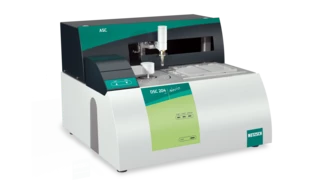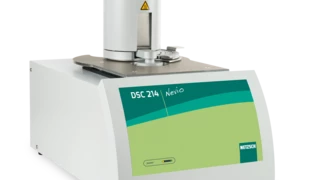Pharma
DTBP — Heat-Wait-Search, Time to maximum rate
A crucial part of risk assessments are worst-case scenarios which are usually carried out under adiabatic conditions.
If the produced heat of a chemical reaction is higher than the heat loss, an auto-accelerating exothermal process starts (also known as “runaway”) and the temperature of the sample increases rapidly.
Thermal runaway reactions are frequently investigated in Heat-Wait-Search tests (Tryb pomiaru Heat-Wait-Search (HWS)Heat-Wait-Search is a measurement mode used in calorimeter devices according to accelerating rate calorimetry (ARC).HWS).
To predict conditions for safe storage of chemicals, the time-to-maximum rate (TMR) is often calculated based on such experiments. It is the time between the start of a thermal runaway reaction and the maximum reaction rate (maximum self-heating rate) which can be equivalent to an explosion of a chemical reactor. As the observed TMR is influenced by the PHI factor of the reaction vessel, there is usually a correction to PHI = 1.
The graphics are derived from a measurement on Di-tert-butyl peroxide (DTBP) in toluene, a reference
material for verifying the performance of Accelerating Rate Calorimeters (Kalorymetria reakcyjnaThe method describing isothermal and adiabatic test procedures used to detect thermally exothermic decomposition reactions.ARC® equipments).
DSC instruments can also measure such reactions, however, using much smaller sample sizes.



